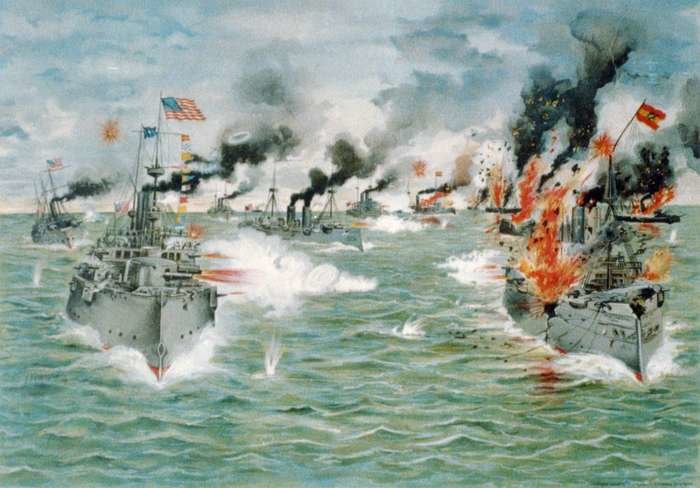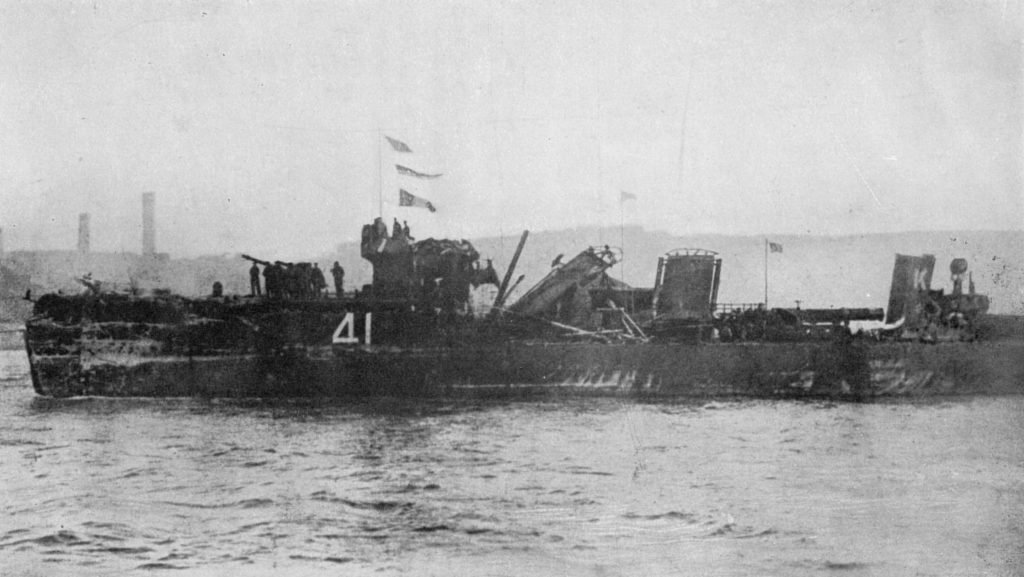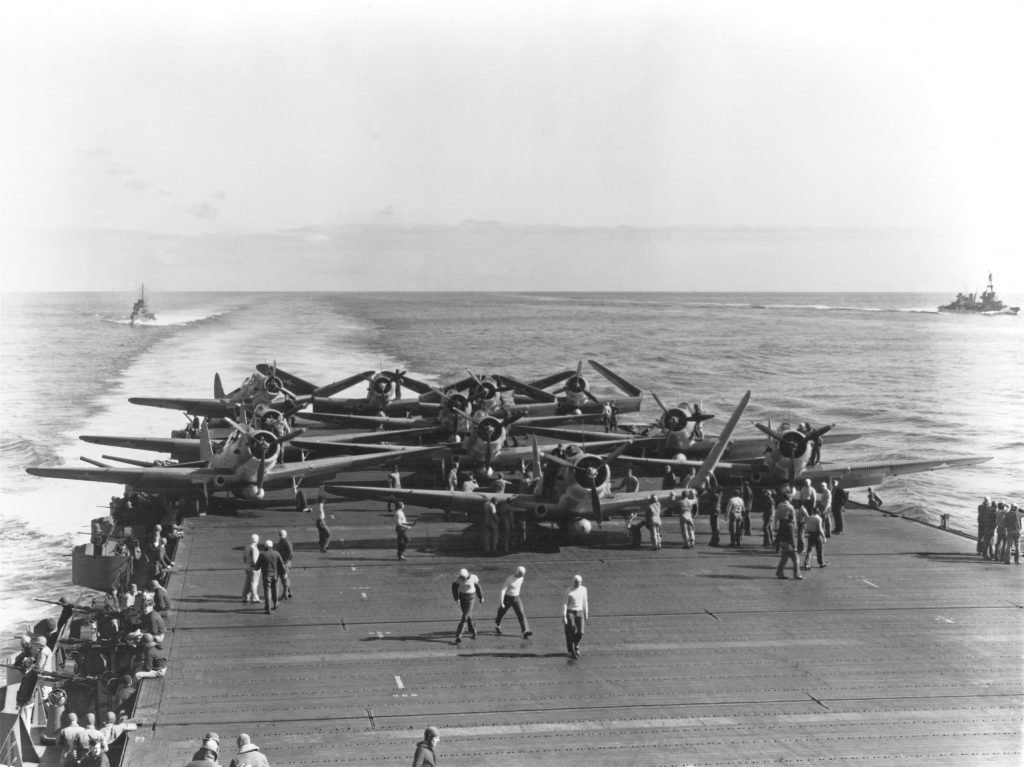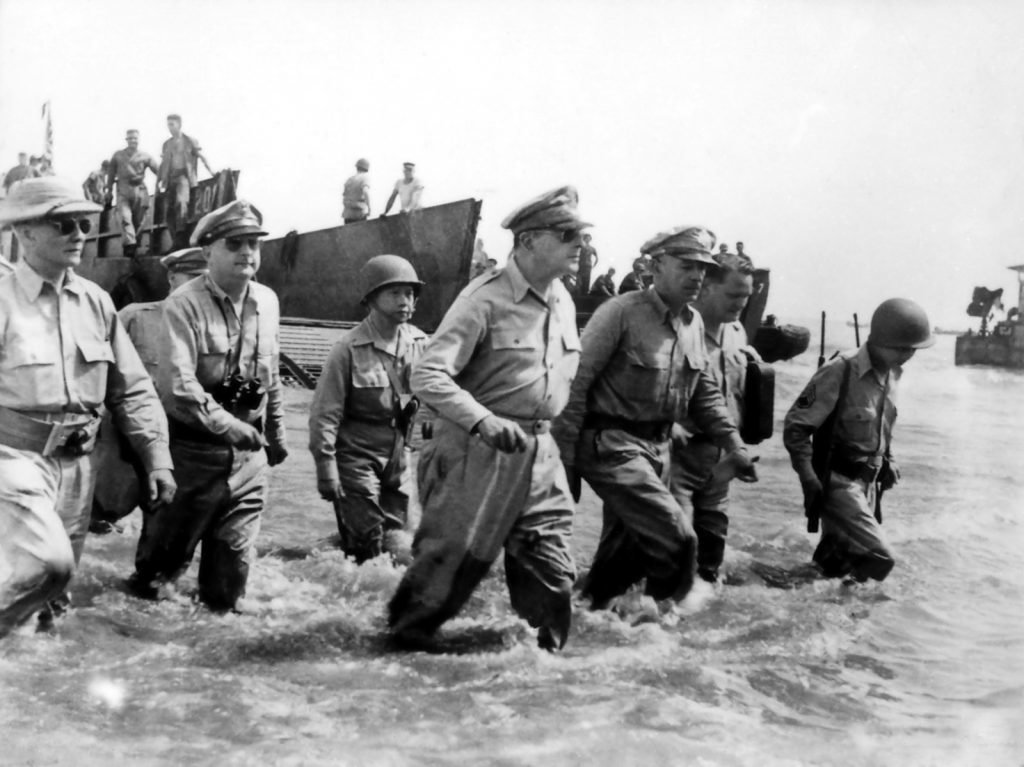
Yamato during sea trials, October 1941. Photo courtesy of Wikimedia Commons.
Over the course of history, major superpowers have all had one thing in common: a powerful navy. Battles at sea have contributed to both the rise and the fall of empires, with individual sailors sometimes being all that stood between victory and defeat.
Although aerial superiority has become one of the most advantageous capabilities in modern warfare, a dominant naval force is as important as ever. The United States has invested heavily in its navy and has aircraft carrier groups positioned strategically around the world, as both a deterrent and a force projection platform. Technology has changed many aspects of how the Navy operates today, but the cornerstones of the profession were born in battles at sea — here are five of the most notable engagements in recent history:
The Battle of Manila Bay, May 1, 1898

The U.S. Asiatic Squadron arrived and completely decimated the Spanish Pacific fleet during the Battle of Manila Bay in the Philippines on May 1, 1898. The first and largest battle of the Spanish-American War declared the U.S. Navy as a premier naval entity, which helped the Philippines secure its independence from Spain. Commodore George Dewey led a fleet of four cruisers — the flagship USS Olympia, USS Boston, USS Raleigh, and USS Baltimore — as well as two gunboats, the USS Concord and USS Petrel; and an armed revenue cutter, the USS Hugh McCulloch. His fleet was supported by a pair of British supply steamers as they waded into Manila Bay at around 5:40 a.m.
Spanish Admiral Patricio Montojo’s fleet consisted of his flagship vessel, the Reina Cristina, and an out-of-date wooden steamer called the Castilla that had to be towed wherever it went. Montojo was supported by two cruisers called the Isla de Cuba and Isla de Luzon; three gunboats, the Don Juan de Austria, Don Antonio de Ulloa, and Marques del Duero; and a shore battery of six guns located in close proximity to Cavite. The U.S. Navy sunk eight Spanish ships of the 13 total and hammered the shore batteries in a decisive effort to turn the tide of the war.
Battle of Coronel, Nov. 1, 1914

The Battle of Coronel was the first naval battle of World War I, fought between the British Royal Navy and the Imperial German Navy. On Nov. 1, 1914, the two fearsome squadrons duked it out off the coast of neutral Chile after the British Royal Navy confronted the Germans outside the port of Coronel. The engagement was the first of its kind in nearly a century and a severe miscalculation on the Royal Navy’s part. Spending nearly 2,000 shells, the Germans sank two of four British warships, killing an estimated 1,700 sailors. Not a single German sailor or cruiser was lost. It was a considerable wake-up call that shocked British royalty, rocking Britain’s reputation as a superpower.
The Battle of Jutland, May 31 to June 1, 1916

The largest naval battle of World War I lasted only two days. The Battle of Jutland unfolded on May 31, 1916, off the North Sea coast of Denmark’s Jutland peninsula. With 250 ships and nearly 100,000 men, the battle was the only time the British and German fleets’ battleships squared off against one another. The Germans, emboldened by past naval victories, challenged the British Royal Navy, which cost them 11 warships and over 2,500 men. The German onslaught was not in vain, as they destroyed 14 British vessels and killed nearly 6,000 men. The battle was destructive for both sides, and the Germans stayed away from the British-controlled North Sea for the duration of the war, fearing a similar result.
Battle of Midway, June 3 to 7, 1942

On the heels of the Battle of the Coral Sea, which was the first time aircraft carriers directly engaged one another, the Imperial Japanese Navy called for the destruction of the U.S. Pacific Fleet nearly a month later. However, the U.S. Navy had the advantage, thanks to codebreakers that tipped off the Japanese plans to capture Midway Island in the Pacific. From June 3 to 7, 1942, the U.S. Navy downed nearly 300 Japanese aircraft, killed 200 of Japan’s most experienced pilots, and destroyed four aircraft carriers and one heavy cruiser during the Battle of Midway. Japan abandoned any further plans in the Pacific, and this success changed the tide of World War II.
Battle of Leyte Gulf, Oct. 23 to 26, 1944

Arguably the largest naval battle in history, the Battle of Leyte Gulf was a series of engagements that occurred from Oct. 23 to 26, 1944, between the U.S. and Japan in the oceans off the Philippine islands of Leyte, Samar, and Luzon during World War II. The Japanese would not succeed in overtaking the strategically important Philippines in the South China Sea — losing four aircraft carriers, three battleships, six heavy and four light cruisers, and 11 destroyers, including some 300 aircraft and 10,500 sailors. The Allied casualties included six warships, 200 aircraft, and 3,000 sailors and airmen killed. The battle crippled Japan’s ability to act as an offensive naval force for the remainder of the war.

Matt Fratus is a history staff writer for Coffee or Die. He prides himself on uncovering the most fascinating tales of history by sharing them through any means of engaging storytelling. He writes for his micro-blog @LateNightHistory on Instagram, where he shares the story behind the image. He is also the host of the Late Night History podcast. When not writing about history, Matt enjoys volunteering for One More Wave and rooting for Boston sports teams.
BRCC and Bad Moon Print Press team up for an exclusive, limited-edition T-shirt design!
BRCC partners with Team Room Design for an exclusive T-shirt release!
Thirty Seconds Out has partnered with BRCC for an exclusive shirt design invoking the God of Winter.
Lucas O'Hara of Grizzly Forge has teamed up with BRCC for a badass, exclusive Shirt Club T-shirt design featuring his most popular knife and tiomahawk.
Coffee or Die sits down with one of the graphic designers behind Black Rifle Coffee's signature look and vibe.
Biden will award the Medal of Honor to a Vietnam War Army helicopter pilot who risked his life to save a reconnaissance team from almost certain death.
Ever wonder how much Jack Mandaville would f*ck sh*t up if he went back in time? The American Revolution didn't even see him coming.
A nearly 200-year-old West Point time capsule that at first appeared to yield little more than dust contains hidden treasure, the US Military Academy said.












